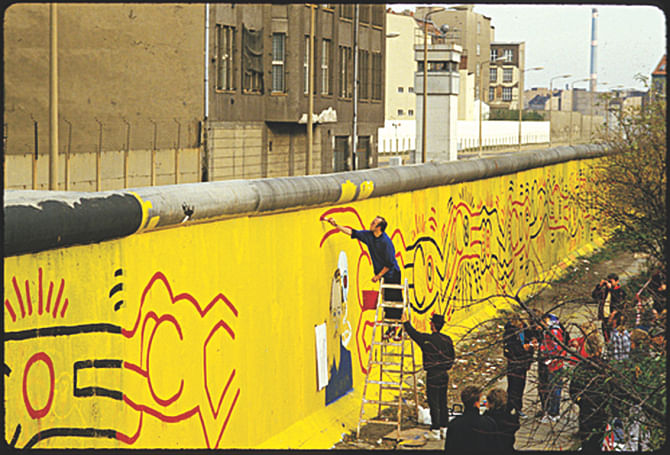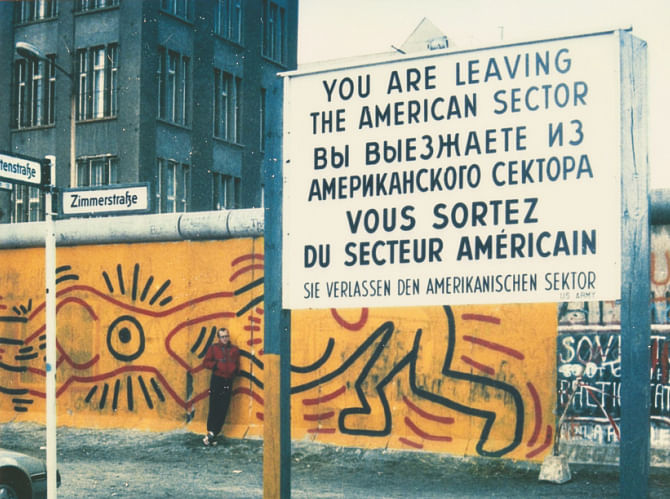Killing the wall with three colours

Keith Haring began painting on the streets. Subways and subway terminals became the backdrops of his continuous linear figures and patterns. In 1986, after he had achieved international acclaim, the Museum Checkpoint Charlie asked him to paint a mural on the Berlin Wall. Checkpoint Charlie was one of the most frequented passageways through the wall.
In yellow, red, and black, Haring's mural covered 100 feet including parts on Western and Eastern territory.
These colours represent the flag colours of both West and East Germany. His organic figures lay horizontally on the wall, linked together by the connection of hands and feet. Haring alternated red and black figures on the yellow backdrop, through which previous artworks can still be seen. In his distinct style, the figures are surrounded by lines and detailed with circles. Haring's mural was meant to be show a unity between East and West Berlin. The chain-linked figures were meant to identify with anyone who looked at the work. But the painter described it as a “political and subversive act – an attempt to psychologically destroy the wall by painting it.”

Haring's work was both sanctioned and un-sanctioned. While he was invited to paint at Checkpoint Charlie, he did not have authorisation to paint on the part in East Germany. A team from the Museum painted the 100 feet of yellow in the dead of night. Haring then spent 6 hours completing the mural the next day. He was watched by guards from both sides of the wall and would move back to the West Berlin side of the wall anytime he felt he was going to be arrested. West Berlin guards even warned him of the potential for arrest via megaphone as they watched him hop across the border. Highly publicised by the Museum, Haring had a steady string of onlookers as he worked. He did interviews with both local and international media spreading the word and the photographs of his work.
By the time it came down in 1991, Haring's mural had completely disappeared. But he was never bothered. Not at all. He wrote once that his work, “is temporary and its permanency is unimportant. Its existence is already established. It can be made permanent by the camera.”
Haring just wanted to draw attention to the crisis.

 For all latest news, follow The Daily Star's Google News channel.
For all latest news, follow The Daily Star's Google News channel. 



Comments